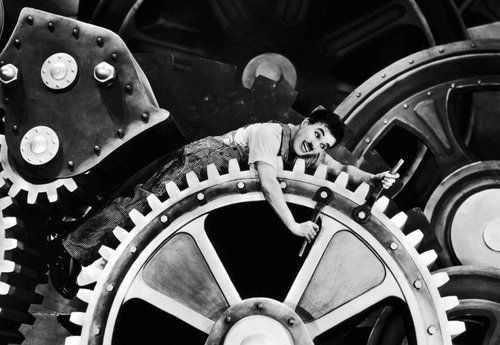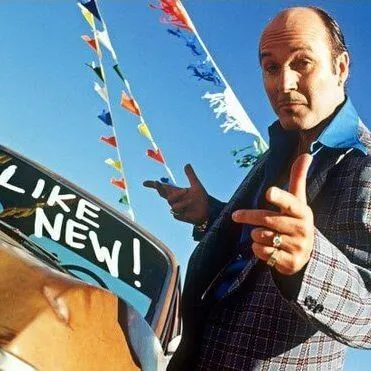False Dawns & Brilliant Technology: Part 3 - Tech Business Models
Wednesday, 21 September 2022By Chris Yapp

A central feature of many tech innovations is that what makes the difference between success and failure is the business model. History has many examples of the failure of large corporates to take advantage of their own inventions because they were locked in to a particular business model mindset. Xerox PARC has an over 50 year history of successful innovations, but those in the computing science field were better exploited successfully by others, notably Apple and Microsoft.
The FT has reported that the US now has the longest Tech IPO drought in 20 years. Faced with inflation and slowing growth, business models based on high growth and deep losses for years are facing the need to have a more coherent route to profitability than in the recent past. Increased interest rates are an important part of this mix too, as explained by the Economist.
While 'hype springs eternal' in the technology world, more focus has been put on the tech than on the business models. I am far from alone in finding the Gartner Hype Curve a valuable tool to understand technology trajectories. I am beginning to think that it would be a good idea to do a hype curve for the business models themselves.
A few years ago the Freemium model was all the rage, a basic free service with chargeable bells and whistles. I saw and heard all sorts of tech businesses that claimed that Freemium was the way to go. Yet underneath it, the business models assumed conversion rates from free to chargeable at around 60-80% inside 6 months. In practice 10% is a very good conversion rate.

Then followed the “sharing economy” in which everything from clothing, electrical equipment and cars could be made more affordable for everyone by “sharing”. I even had a pitch for a sharing estate agency! The distortion of the English language was a joy to behold. If my neighbour asked to borrow a lawnmower, I am not sure that asking him to sign an 1100 clause terms and conditions contract would be seen as being in the right spirit.
I don’t wish to recall how many times I’ve seen arguments that “we are following the successful UBER model”, while aiming to be cash positive inside 18 months. During the pandemic shutdown, most weeks I received offers for a subscription based service. Following on from the Netflix model, wine and food, clothing, makeup and others tried to use the subscription model. I still see new businesses thinking that this is viable in all sorts of sectors. Yet two of the subscription services I signed up to have gone out of business since the economy reopened (despite my custom).
It was argued that the pandemic had accelerated the shift to a cashless society, yet the cost-of-living crisis shows signs of some return to cash. My experience is that trends always create an opposite reaction which needs to be considered in assessing realistic timeframes for change. That crisis seems to be affecting many subscription-based models. That Netflix is now considering actively an ad-backed service to work alongside its subscription service indicates that change is in the air.
I thought of this recently when a former associate recently died before his time. After the dotcom bubble burst, he invited me to participate in a series of roundtables on the future of the digital economy. Recent events have reminded me of a fascinating contribution from an individual who argued that the 'ad-backed software model' was not sustainable long-term across the economic cycle.

The central argument of the business model is that targeted advertising based on 'big data' could personalise what an individual saw and be more effective. Let’s unpick that argument a bit. If advertising becomes more effective what that means is that you need less advertising for any level of economic activity. So, if advertising is to grow then economic growth has itself to increase. If economic growth slows then advertising would slow more. Even allowing for the problem of bots reading adverts, not humans, I think this is an interesting weakness.
By 2010 the tech businesses backed by ad spend were growing and their stock showed premium pricing, even after the financial crash. Now let’s look at where we are today. Online advertising is quasi-monopolistic and while stock prices have fallen since pandemic highs, I think that it’s reasonable to be sceptical about where this heads next.
My long career in the tech industries has been littered with companies who had 75% plus market shares whose avowed business plan was to grow 10-15% faster than the market for 5 years. Do the maths!
If I am right (I may not be!), then this has important consequences. A whole generation has grown up with an expectation of a wide range of services such as email and social media being 'free'. If 'free' proves not to be the sustainable way forward, I’m not clear what the next business model would look like that doesn’t destroy apparent current value.
There is an interesting precedent that may offer an optimistic way forward, radio. In the 1920's only the wealthy owned radio sets, yet after the 1929 crash in the USA radio became a cheap and increasingly universal medium for political, social and economic recovery. Is there a similar candidate this time round? I hope so.
Read the other articles in this series here :